When final assembly of larger-than-human-scale products requires a human touch, industrial equipment manufacturers deploy a variety of industrial work platform solutions to enable access to the appropriate task areas. Solutions range from small step stools to fully tooled robotic frameworks. Holding a commanding position in between those market extremes is Spika Design and Manufacturing, a Lewistown, Montana-based provider of commercial and custom industrial work platforms. Spika provides automotive, aerospace and military aviation manufacturers with reliable, ergonomic platforms to support a wide variety of assembly and maintenance operations. Sustaining its place in the market, however, requires close attention to evolving customer needs.
“All of our customers need a work platform of some type, maybe to access sections of a heavy duty pickup truck or the nozzle on a rocket motor,” said Spika Director of Business Development Jeff Ruffner. “Their safety folks want maximum assurance of compliance with OSHA requirements. Their technical teams want safety too, but they also want maximum height variability. Adding to the challenge is steady demand for customization, cost efficiency and faster delivery.”
A key to meeting its customers’ needs has been Spika’s selection of electromechanical linear actuators that automate the raising and lowering of platforms and the articulated stairs that enable access to them. With the help of actuator manufacturer Thomson Industries, the Spika engineering team is proving that safety compliance, height variability, custom innovation and fast delivery do not need to be mutually exclusive.
Rising to the occasion
Most of the platforms that Spika provides are 3-feet wide and 10 to 16 feet long. At this scale, keeping platforms level is important for safety as well as productivity. Prior to actuators, height variability for work platforms relied upon manual screw jacks. They would raise one side at a time, cranking it up a few inches to the desired height and adjusting the other jack accordingly until the platform was level. Recognizing the obvious inefficiencies, Spika engineers tested alternative solutions.
“We tried motor- and manual chain-driven ball screws, but these were labor intensive,” said Tom Spika, the company’s CEO and founder. “We also looked at hydraulic systems, which have been popular for power elevation, but found significant limitations there as well. Shortfalls included fluid leakage, settling over time and, most importantly, the inability to maintain elevational balance. Electromechanical actuators proved to be the most economical and effective solution.”
A typical electromechanical configuration might include four actuators acting for a single stage to achieve up to three feet of height variability, or two actuators on each corner to obtain up to 6.5 feet of height variability. Additional actuators are used to adjust variable pitch stairs to make it easier for workers to access the adjusted height. Height adjustment ranges of up to 6.5 feet can be controlled from push buttons located on the platform.

Spika provides ergonomic work platforms, supporting a wide variety of assembly and maintenance operations for automotive, aerospace and military aviation manufacturers.
Although a significant improvement over trailer jacks, Spika engineers found this simple arrangement of actuators to be less than optimal. Variations in factors such as load distribution and floor consistency resulted in uneven platforms. An unbalanced load, for example, would cause one actuator to top out an inch or so before a lower one, making for a somewhat jerky ride while adding mechanical stress.
In sync
To counter load and balance issues, Spika engineers installed electromechanical actuators to keep the platform balanced. Initially, they had deployed an early generation of self-synchronizing actuators, but as customers increasingly demanded greater height variation on heavier loads, the engineers sought a more robust solution.
“Where 23.5 inches of actuation may have been adequate in the past, today it is not uncommon to get requests for 6.5 feet or even more,” said Ruffner.
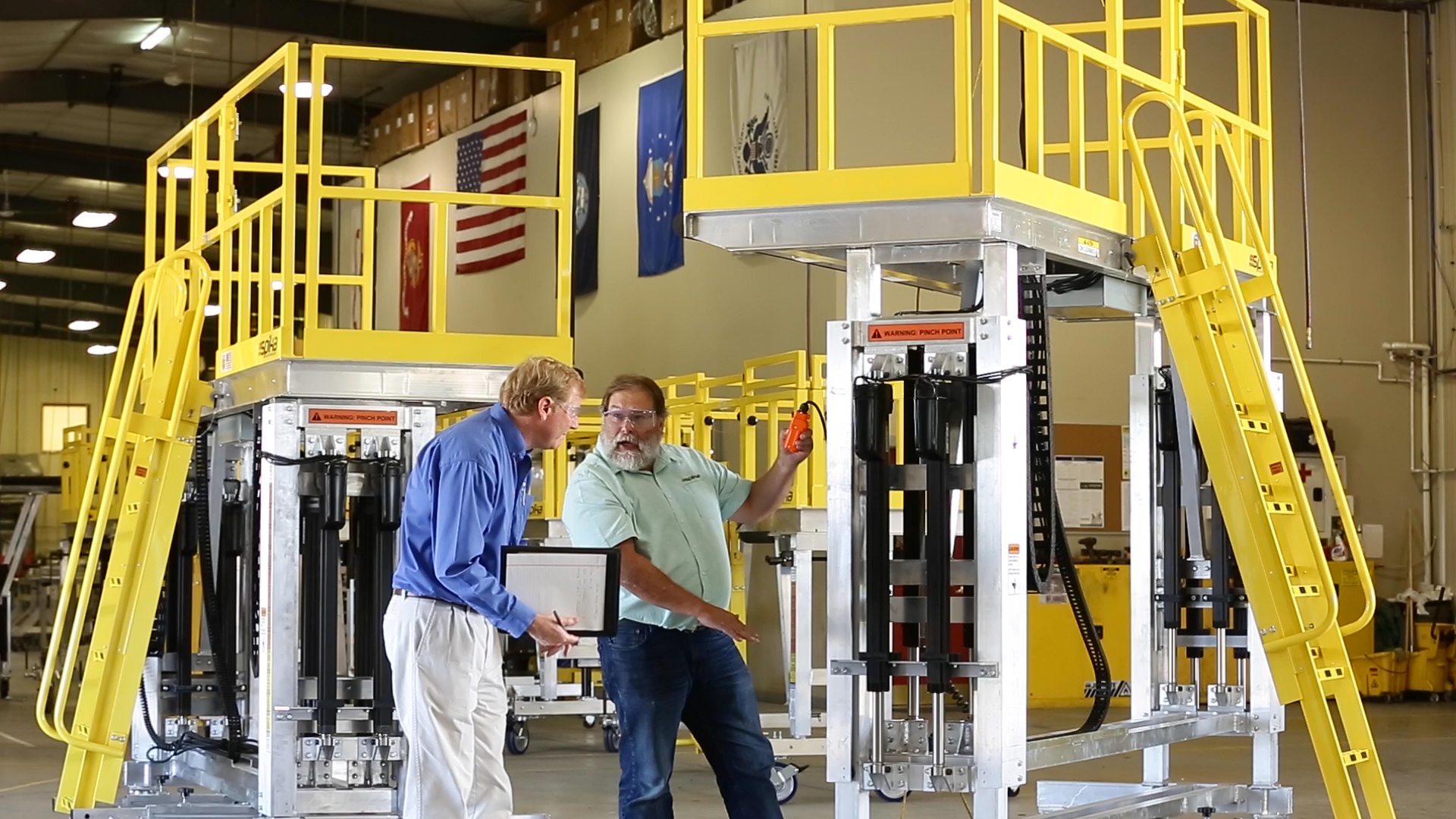
With more and more customers requesting platforms with larger height adjustments, Spika was able to find an enhanced electric linear actuator solution with Thomson Industries.
Meeting such demands required faster actuators with greater static load holding strength. After evaluating several options, the Spika team found that Thomson Electrak® HD electromechanical linear actuators would be the best solution to provide the speed and strength needed to keep up with the changing and increasingly uneven load conditions they were encountering.
With speed capacity exceeding 1.5 inches per second and strokes up to 3 feet, Electrak HD actuators provide Spika with smooth synchronization in large and demanding applications. Their static strength of up to 18 kilonewtons is consistent across its entire product line.
“Having consistently high static strength for each actuator is important,” said Ruffner. “OSHA requires load testing of all platforms to a four times safety factor. With Thomson’s consistent 18-kilonewton strength, we are confident that we have covered the testing range for any application we choose.”
In addition to demanding greater height and load capacities, Spika’s customers were looking for faster delivery, a need that Thomson helps meet by delivering actuators in two to three weeks instead of the eight to twelve-week industry norm.
A smarter solution
Thomson actuators achieve smooth synchronization by using an embedded microcontroller that allows for communication between each actuator on the common circuit. The actuators use only two wires to connect to a power supply and two to connect to other actuators in the system. Any actuator can then be used on the circuit to drive the system via three low-current wires connected to a simple switch or discrete I/O on a PLC.
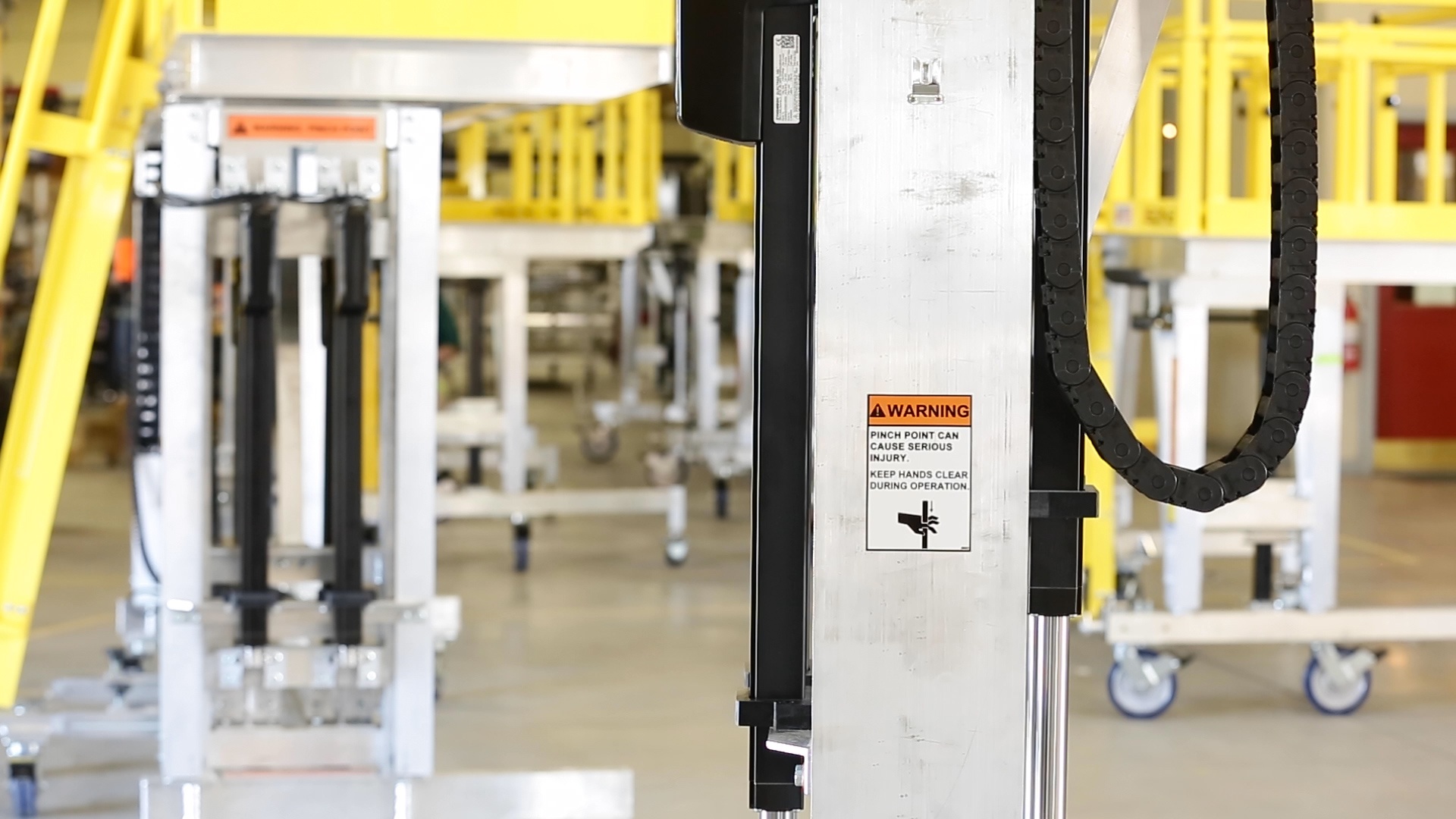
Using an integrated circuit board, Thomson Electrak HD electromechanical linear actuators deliver smooth synchronization of Spika work platforms.
In a typical configuration, Spika engineers designate an actuator as the master, providing the reference point against which all other actuators synchronize. All actuators are constantly driving to a set speed, regardless of load changes. When actuation starts from the same fully retracted position, the result is a smooth, synchronized movement that will handle uneven and even shifting loads.
“Especially in comparison to hydraulic systems, the Thomson synchronized actuators provide us an optimal solution for our applications,” said Spika. “With Thomson’s synchronized actuators, our platforms stay level regardless of the load distribution; something that hydraulics cannot do easily.”
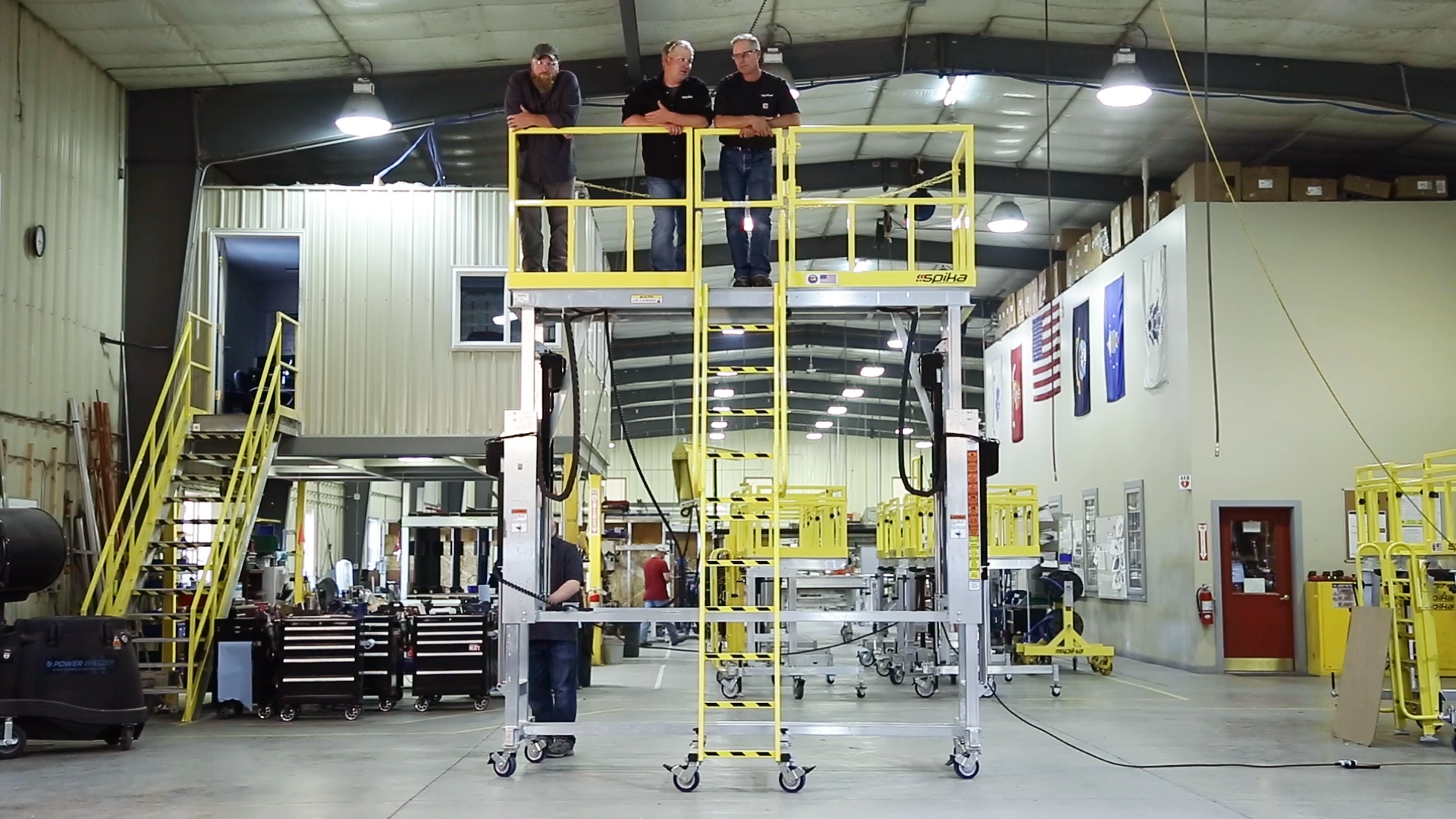
Height variation on heavier loads requires faster actuators with greater static strength to keep the platform balanced. Thomson Electrak HD actuators support changing and increasingly uneven load conditions, with speed, strength, safety and efficient operation.
Responding to market challenges
Actuator synchronization has created new, innovative possibilities for Spika to meet customer challenges. For example, a tier-one aerospace manufacturer needed a platform that would fit around the nose of an aircraft, thereby requiring a cantilever to extend an additional 15 feet from the platform. Raising and lowering the extension from the base platform required five actuators. Although there were caster beams supporting the extension underneath, the extension load put additional stress on the actuators.
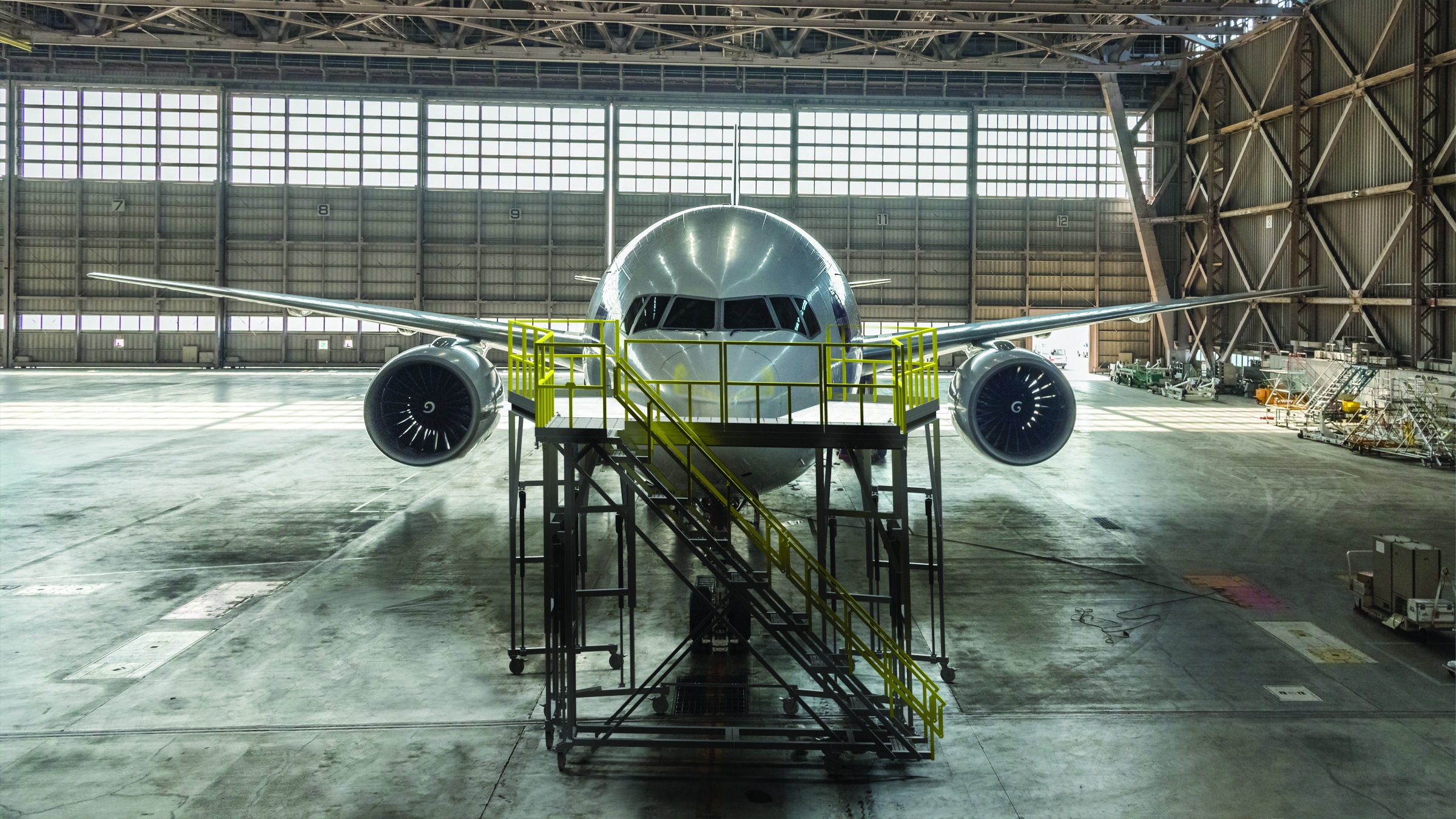
In instances where there is heavily cantilevered and uneven loads, such as this platform for accessing the nose of an aircraft, actuator synchronization is key. It eliminates the need to add counterbalance weights, enabling the actuators to adjust accordingly to improve system operation.
“Synchronization is very valuable for heavily cantilevered and uneven loads like these,” said Ruffner. “In the past, it was not uncommon for companies to hang the weight off the back of the platform to counterbalance such cantilevered arrangements. Electronic synchronization, however, eliminates the need to add counterbalance weights for these types of loads because the synchronized actuators can sense speed changes and adjust independent actuators accordingly to improve system operation.
“Companies worry about the ergonomics for their workforce because those costs add up over time,” he continued. “One of our aerospace customers was driven to re-engineer their platforms and slides because personnel were incurring a high number of musculoskeletal injuries. By employing a platform of ours that can provide various access points safely, they can enhance the health and safety of their employees while saving on insurance costs.”
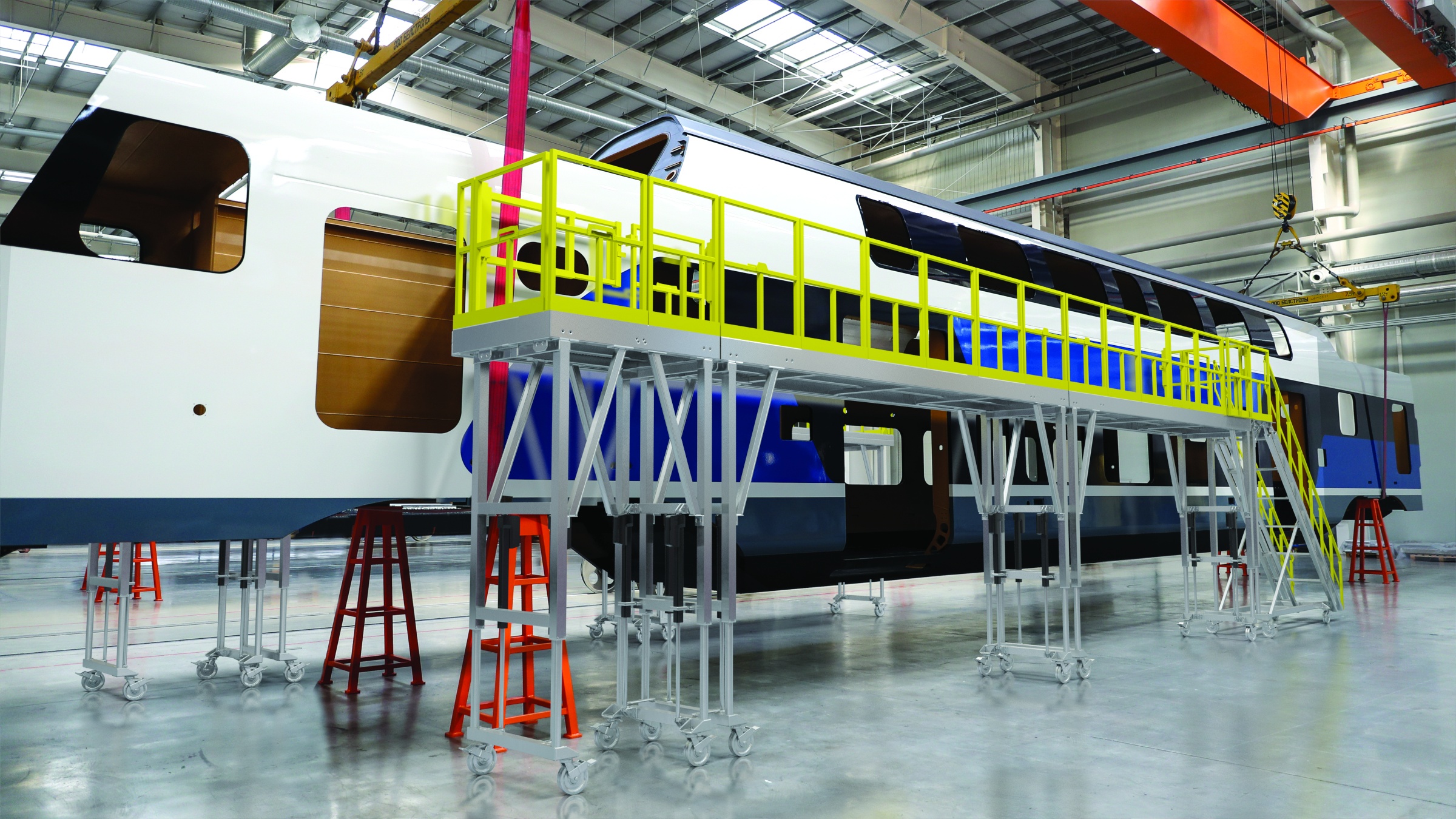
Nothing is more important to Spika’s customers than worker safety and ergonomics. In the case of this assembly line for train cars, the platform’s utilization of synchronized Thomson actuators allows workers to avoid potential dangers and save on insurance costs.
Spika engineers see actuators playing a continuing role in helping the team stay abreast of customer demand. Where typical configurations involve 10 or 12 actuators, as their price points drop even further, they are envisioning a day when many more could be deployed, noting that, theoretically, there is no limit to the number of actuators that can be synchronized.
“As actuator advances enable us to meet new efficiency challenges, we are getting more and more unique requests,” said Ruffner. “One aviation customer posed the challenge for sliders to extend simultaneously to follow the contour of the work object as the platform rose. And once it reached 50 percent of its height, they wanted the sliders to retract. This is the kind of thing where we might draw on the additional intelligence and communications built into Electrak HD actuators to connect to a programmable logic controller, which could control interactions with servo motors and drives to enable more complex operations.”
Whatever the future of industrial work platform automation brings, it is likely that self-synchronizing actuators will have an important role to play, and that innovative engineering companies like Spika will take full advantage of that potential to deliver even safer and more cost-efficient solutions to customers.


